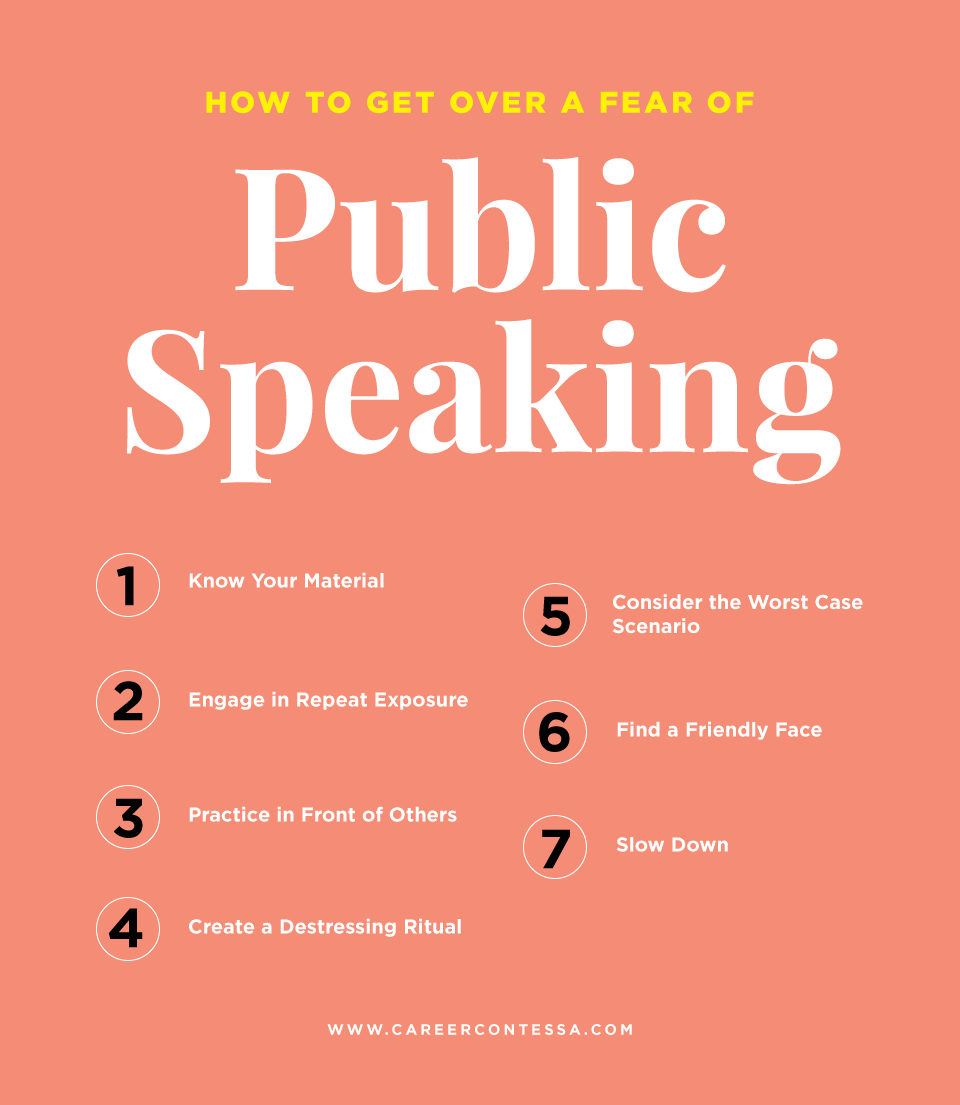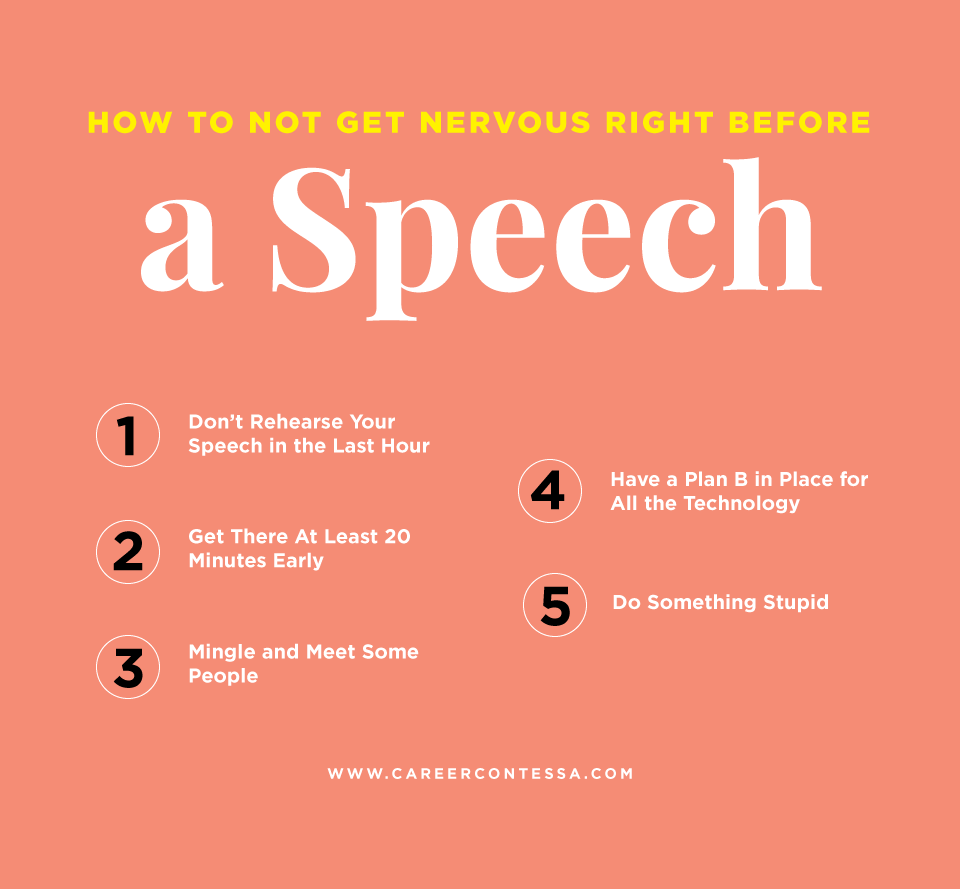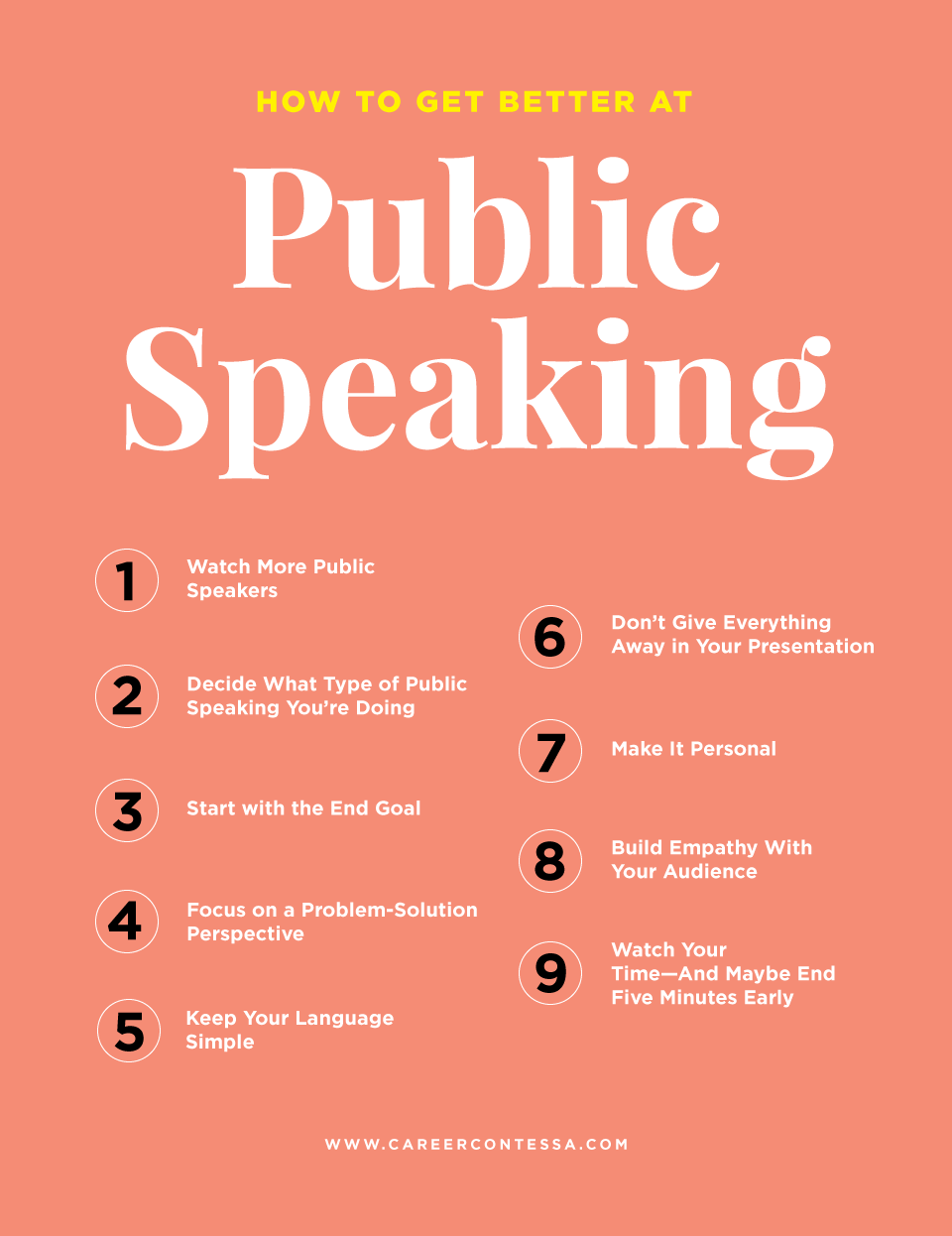Show me a person who doesn’t fear public speaking or getting up in front of a crowd. Please.
While it gets easier the more you do it (“practice makes perfect” and all that), getting nervous before speaking in front of a crowd affects most of the population.
And yes, there’s an official term for this fear—glossophobia or “speech anxiety.” Let's dive into all of this a bit more—and how you cope.
What is The Fear of Public Speaking?
Glossophobia is the fear of public speaking, and it's a very common fear. Researchers believe this social phobia impacts up to 75% of the population.
Even if you don't think you have a full-on fear or official diagnosis, you might suffer from public speaking
anxiety—that nervous feeling that happens before you ever get into social situations.
Learning how to overcome this fear can feel impossible, especially if you've ever felt stage fright or the embarrassment from audience reactions (or lack of reactions) when you got in front of a group of people.
Physical Symptoms of Glossophobia
Some of the physical reactions you might experience include:
- Quavering voice
- Increase in blood pressure
- Your heart rate starts to race
- Muscles tense
- Dry mouth
- Nausea
- Sweating
- Adrenaline rush
- Butterflies in your stomach
- Dizziness
What Causes Fear of Speaking?
Social phobias often stem from a lack of
self-esteem or the fear of rejection by others. If you've ever felt embarrassed or judged by other people that made you physically react, then you can relate.
And for some people, public speaking can trigger a fight-or-flight response, the human body’s physiological response to perceived threats.
The good news is that public speaking is an art— a skill set you can continually improve on. It's also a fear that you can learn to overcome.
Even the best public speakers were once fearful speakers, and they know there’s always room for improvement. So, without further ado, here’s a complete breakdown of the best tips and techniques for the following:
- Getting over your fear of public speaking
- Learning how to become a better speaker in general
How to Get Over a Fear of Public Speaking
1. Know Your Material
Before you get up there, you should feel overprepared. For someone who fears public speaking, it’s better to feel like you did too much than too little.
So until you get more comfortable, go above and beyond what’s required and consider every and any angle. It’s better for you that you don’t wind up covering everything you prepared than for you to get asked to cover something you haven’t.
2. Engage in Repeat Exposure
In all likelihood, you avoid getting on stage like the plague. That means you probably don’t volunteer for public speaking opportunities or other projects requiring you to use your
presentation skills or get in front of a crowd. But the opposite is true if you truly want to conquer this
speech anxiety you’ve got going.
Start by committing to smaller forms of public appearances.
Volunteer to present at the next team meeting in your office or
ask your boss if you can present an idea you have rather than write it in an email.
If all else fails, sign up for something like
Toastmasters International, where you’ll have a formal space to practice that’s low pressure.
3. Practice in Front of Others
Yes, it’s awkward to
mock present, but it’s going to help. Ask a friend or trusted colleague to listen to you run through your speech or powerpoint presentations.
It helps to give them some guidelines for what to keep in mind: Did your argument make sense? How was
your body language? Did you speak too fast? Jot down notes and then run through it again.
4. Create a Destressing Ritual
Before you get on stage (or walk into the conference room), find a way to slow yourself down and create a pre-speaking
ritual. That might be deep breathing—inhale and exhale— taking a walk around the block, or picturing where you’ll be after the meeting.
5. Consider the Worst-Case Scenario
Chances are, it’s not that bad. Thinking of what’s giving you anxiety, i.e. what’s causing this fear, is the best way to take away its power. Are you afraid you’re going to get
demoted or
fired? That people will laugh?
Close your eyes and imagine the worst-case scenario. You’ll be surprised by how exaggerated those thoughts have probably become. By taking a step back, you take away the power.
6. Find a Friendly Face
Don’t focus on the crowd. Instead, stick to focusing on your material. That said, if possible, it helps if you can connect with at least one person in your audience. Maybe it’s that colleague who helped you run through your presentation.
It might also be a stranger in the front row who’s smiling and nodding a lot. This gives you someone to connect with on a one-to-one basis so that you’re not overwhelmed with looking at too many places at once.
7. Slow Down
You’ll want to talk fast, which will make you feel like you could slip up at any moment. That old advice about
slowing down when presenting is a cliché for a reason.
So slow down. And don’t forget to respect silences. If you appeal to your audience with a question, give them roughly four times as long as you’d expect to volunteer a response. A little quiet in every presentation is OK. You want them to let all the information you’ve presented sink in.
The Day of: How to Not Get Nervous Right Before
1. Don’t Rehearse Your Speech in the Last Hour
For the same reason everyone always said in college that you shouldn’t study your notes right before an exam. If you’ve followed our guidelines above, you’ve prepared and then some. So the
morning of, give yourself a break.
2. Get There At Least 20 Minutes Early
Some people say 10, but hey, the earlier the better. This gives you time to get to know the set-up, run to the bathroom, check to make sure you don’t have anything in your teeth, whatever, in a reasonable time frame that’s not stressful. You don’t want to feel rushed.
3. Mingle and Meet Some People
Before you go on stage, mingle. Shake hands. Chat. Connect with some of the strangers who will be
listening. Why? Because they won’t feel like strangers anymore, you’ll feel much more comfortable talking to them.
4. Have a Plan B in Place for All the Technology
Before you even get there, consider what could go wrong, such as a
presentation not loading properly or the mic not working all of a sudden. Bring a flash drive as a backup to your computer. Prepare a joke about how you’ll “try to project from my diaphragm” if the mic fails, etc.
5. Do Something Stupid
Listen to a terrible power anthem in the car on the way over, yell
mantras in the bathroom, and shake out your arms and legs. All of this helps expend some of that nervous energy that’s building, plus it also means you’ll take yourself less seriously.
Now, How to Get Better at Public Speaking
Getting better at public speaking really just requires practicing some tried and true techniques. As you conquer your fear of public speaking, consider working on some of these elements as well. You’ll be presenting to crowds in no time.
6. Watch More Public Speakers
People love
TED Talks for a reason. Those speakers get it right. Before preparing a speech or presentation of your own, watch some talks that inspire you. Take notes about some of the behaviors and speech patterns they use.
Do they tell jokes? Use their hands as they speak? Play with lyrical repetition in their speech patterns? There's no right answer, but you can learn a ton of different techniques by watching, listening, and jotting down what you observe.
7. Decide What Type of Public Speaking You’re Doing
Once you've started to understand the patterns in speakers you admire, and before you start writing your speech or preparing your presentation, think about what type of public speaking you want to do.
The consensus is that there are four types of public speaking: informative, persuasive/motivational, demonstrative, and entertaining.
Some people also list "impromptu" public speaking as lucky #5. But here are the most common types of public speaking for professional purposes (we think, anyway)
- Informative - If the goal is to introduce people to a new project you've worked on, your speech or presentation will probably fall into this category. This is a common type of public speaking for internal meetings—it's likely that you'll get asked to introduce other departments at your company to the work you do, and you'll want to make it as straightforward and accessible as possible. Think of this sort of like a professor's lecture.
- Persuasive/motivational/inspiring - Hello, TED Talks. This is where you're trying to convince someone to buy into an idea, pitch, or request. If you work with clients a lot, you probably know this format well. You're presenting what you want to do to someone, and you're convincing them they want to do it, too.
- Demonstrative - We'd actually almost argue that this is a type of informative public speaking. In this case, though, you're actually showing people how a physical product works by demoing it right there. This is more common if you work in a sales team or something of the like.
- Toast/Celebratory Speechmaking - Less common in professional environments though not unheard of, this type of public speaking is what you do when you're the maid of honor at your best friend's wedding. This is also occasionally referred to as "speaking to entertain." That said, the more you assume leadership roles within your company and career, the more likely it is that you'll want to be able to make a speech celebrating your team's wins.
8. Start with the End Goal
- Why can't they afford to say no?
- What's the evidence I have that my idea is important/will work?
- How are these ideas unique?
- What's the problem I'm trying to solve?
- How do I explain why I'm here today to this group?
9. Focus on a Problem-Solution Perspective
Again, per the questions above, one of the easiest ways to attract your audience's attention is to call out a
pain point or problem they're facing in their own work or lives.
The goal is to demonstrate that 1) yes, they've got a problem 2) no problem, you can solve it 3) here's how.
10. Keep Your Language Simple
The best speeches and talks are straightforward and accessible. You want to keep your audience captivated, so making it difficult for them to understand by complicating what you're saying is a no-no.
- DON'T use business jargon.
- DON'T worry about big words or flowery language.
- DO ensure that what you discuss follows a step-by-step storyline that's easy to trace.
11. Don’t Give Everything Away in Your Presentation
You've heard this before, but if you plan on using a sideshow with your public speaking debut, don't put everything you say into the slides.
This is not reading from a script. The best public speakers use visual aids to help them illustrate their key points but not make their points. If people have to squint to read your slideshow, it's probably not a good one. So keep the focus on what you're saying.
12. Make It Personal
Tell jokes. Use illustrations from your own life. Tell
stories from your childhood. It shows you can read the room and proves you're not just a robot reciting lines.
13. Build Empathy With Your Audience
The most engaged audiences are the active ones who feel invested in what you're saying. One of the best ways of doing this is to appeal to the audience's
empathy.
Try starting a sentence with "Imagine if..." or say something like "When you were growing up, you probably..." Empathy goes both ways. Try to put yourself in the listener's shoes and give them the presentation or speech they want or need while also appealing to their own understanding of you and the work you do. You'll see how quickly you get them on your side.
14. Watch Your Time—And Maybe End Five Minutes Early
No one likes a long speech or talk. Bring a watch so you can keep track of time without losing your train of thought.
And no, it's not a bad idea to cut yourself off a little early. It's a pleasant surprise for most people who have spent their lives listening to pedantic public speakers who just go on and on and on and on...














